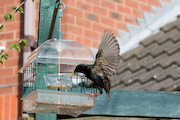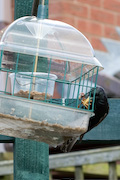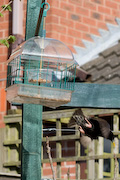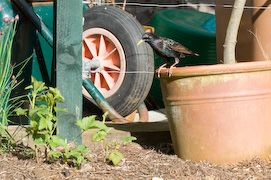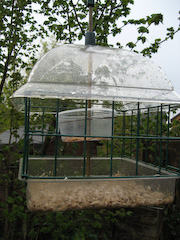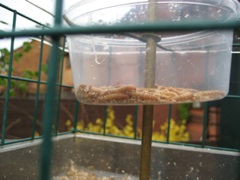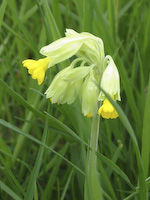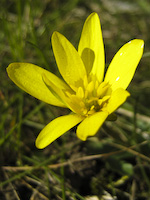I stopped in at my favourite reserve, Brandon Marsh, today on my way home from a trip to Coventry. It was the first time in quite a while that I had been and I was looking forward to it.
Although the weather was definitely on the chilly side and I was only there for about an hour I had a fantastic time.
It is a good time of year to go birdwatching, the summer visitors are here, but the trees are only just coming in to leaf so they can’t hide in the way they will be able to by the time May comes around. Hence I managed to get some really good views of several chiffchaffs; as always I heard them before I found them. There were also lots of blackcaps about, still in groups, although I assume this will no longer be the case once they have paired up and have territories to defend.
Also of note were a large number of swallows, sand and house martins, and a solitary and somewhat cold looking common tern, probably wondering just what he was doing back already. I saw a family of coots, which I thought was quite early, do they breed earlier than other birds, or is it just that they leave the nest soon after they are born? The parents were busy herding them into the reeds when a heron flew over.
I also got some good views various waders and ducks and spent quite a bit of time watching lapwings continuously mob a crow – I assume they are nesting there.
The highlight for me though was my first sighting of a Cetti’s warbler. I heard a bird singing very loudly and had no idea what it was (to my mind it even beat the wren as top noisy bird), and turned round and saw a little brown job (LBJ) behind me. I didn’t know what this was at the time, but resolved to check it out when I got home. I kept hearing these birds all around the reserve (when they could get a word in past the chiffchaffs), and luckily one kept singing when I was in a hide with a couple of birdwatchers who knew their stuff and they told me that this was a Cetti’s warbler, but that they were difficult to see. On getting back I checked the bird books and yes, you’ve guessed it, I did indeed get a fantastic, if brief, view of a Cetti’s. For anyone who is interested here is a link to the RSPB website where you can listen to the sound of a Cetti’s warbler (Cettia Cetti).
I also saw the obligatory kingfisher as I was rushing back to the shop to buy some more sunflower hearts to replace those my garden friends have diligently thrown over the garden – sorry Nick, you’ll see one eventually.
